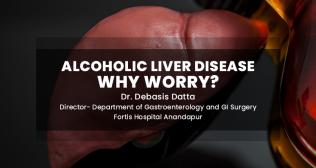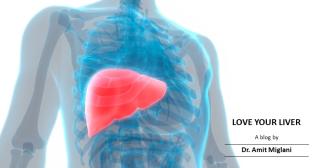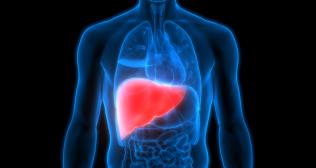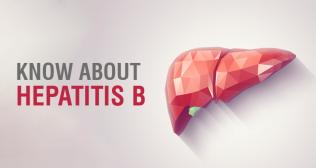
What is Cirrhosis of The Liver: Cause, Diagnosed and Treatment
Introduction
Liver cirrhosis, a condition marked by the histological development of regenerative nodules enveloped by fibrous bands, is an outcome of prolonged liver injury. Its progression not only leads to portal hypertension but also culminates in end-stage liver disease. However, recent strides in comprehending its natural history and underlying pathophysiology, alongside advancements in managing its complications, have heralded a new era of hope for those afflicted. Today, the management of cirrhosis has improved significantly, enhancing the quality of life and survival expectancy for patients grappling with this ailment.
Causes
Liver cirrhosis has multiple causes, including:
- Chronic Alcoholism: Alcohol abuse for more than ten years often leads to cirrhosis, making it a significant cause.
- Chronic Hepatitis: The hepatitis C virus causes gradual liver damage, progressing to cirrhosis over many years. Before the emergence of routine testing, this virus was often transmitted through blood transfusions.
- Autoimmune Disease: This condition is triggered when the immune system attacks the liver, causing inflammation and subsequent tissue damage that can ultimately lead to cirrhosis.
- Inherited Diseases: Conditions such as α1-antitrypsin deficiency, hemochromatosis, Wilson’s disease, galactosemia, and glycogen storage diseases can predispose individuals to cirrhosis.
- Infection and Over-Medication: Liver cirrhosis might also be caused by side-effects of a medicine, parasitic infections (such as with schistosomes), and environmental toxins.
Symptoms
Liver cirrhosis is a progressive condition that presents a spectrum of symptoms, varying from an initially silent early stage to more pronounced signs in later phases. The collective impact of these symptoms and complications creates a substantial burden on both patients and the healthcare system.
Early Stage:
- No visible symptoms due to essential liver compensatory function.
Late Stage:
- Liver function impairment
- Portal hypertension
- Muscle cramps
- Itchy skin
- Poor-quality sleep
- Sexual dysfunction
Complications in the Late Stage:
- Ascites (fluid accumulation in the abdomen)
- Upper gastrointestinal bleeding
- Secondary infections
- Hepatic encephalopathy
- Development of liver cancer
Diagnostics
Diagnosing liver cirrhosis is a multifaceted process, as no single test can definitively confirm the condition. Instead, a comprehensive approach is adopted that combines several liver function tests. The following are standard tests used to diagnose liver cirrhosis.
Initial Screening Tests:
Liver Panel: Initial screening involves a comprehensive panel of tests, including alanine transaminase; aspartate transaminase; alkaline phosphatase; gamma-glutamyl transferase; total, direct, and indirect serum bilirubin; and serum albumin levels.
Additional Tests:
Complete Blood Count With Platelet Count: A platelet count of less than 160,000 per mm3 might indicate cirrhosis, especially in patients with chronic hepatitis C.
Prothrombin Time or International Normalized Ratio: It evaluates blood clotting function, which is often impaired in cirrhosis due to decreased production of clotting factors by the liver.
Special Considerations:
Imaging Studies: Ultrasound, CT scan, or MRI may be used to visualize liver abnormalities, such as nodules or signs of portal hypertension.
Liver Biopsy: An invasive biopsy may be performed to confirm cirrhosis, assess its severity, and identify the underlying cause.
Treatment
Liver cirrhosis can remain compensated for many years before progressing to a decompensation state characterized by jaundice, ascites, encephalopathy, or variceal bleeding. The median survival period of patients with compensated cirrhosis is significantly longer compared to those with signs of decompensation, averaging around nine years.
The management of compensated cirrhosis primarily focuses on three main objectives:
- Treatment of the underlying cause
- Early recognition and treatment of complications
- Prevention of superimposed conditions
By focusing on these three management pillars, healthcare providers can effectively prolong the compensated phase of cirrhosis, improve the quality of life of the patients, and reduce the risk of decompensating events. Here are some of the treatment techniques used for managing liver cirrhosis.
Portal Vein Blood Supply Maintenance:
The treating doctors ensure adequate blood flow to the portal vein through procedures that induce portal vein thrombosis. They also use anticoagulants or interventional techniques to treat portal vein thrombosis and prevent complications such as portal hypertension and variceal bleeding.
Nutritional Support and Strengthening:
Malnutrition can affect up to 80% of cirrhotic patients. It might be characterized by protein, energy, or mixed deficiencies. Adequate calorie and protein intake prevents complications like ascites and infections.
Standardized Follow-up and Management:
Regular follow-ups, including clinic visits and lab assessments, are essential for monitoring disease progression. Patient education plays a pivotal role in enhancing disease management and improving outcomes.
Integrating Palliative Care:
Palliative care is recommended for severe illnesses. It involves giving medical care to improve the symptoms, reduce treatment costs, and potentially prolong patient survival.
Prevention and Lifestyle Modification
Liver cirrhosis is a severe condition that can be prevented or managed with lifestyle changes and proactive measures. Some key points to consider are as follows:
- Maintain a Healthy Weight: Regular exercise and food with a properly balanced diet aid in weight management and enhance overall well-being.
- Avoid Excessive Alcohol Consumption: Alcohol remains a leading cause of cirrhosis. Consider quitting entirely, especially if one has liver disease.
- Medication Management: Only take medications as prescribed by healthcare providers. Avoid unnecessary medications and carefully follow dosing instructions to prevent complications.
- Liver Disease Screenings: Regularly undergo liver function tests. Screen for hepatitis B, especially for at-risk populations, as early detection allows timely intervention and management.
- Optimizing Care for Underlying Conditions: Properly manage diabetes with medication, diet, and exercise. Control non-alcoholic fatty liver disease with lifestyle changes.
- Support: In needed, seek for support to prevent alcohol abuse or consumption. Consult with a nutritionist for a liver-friendly diet plan. Vaccinate against hepatitis B to prevent infection.
Lifestyle changes take time to show results. Consistency is critical to maintaining a healthy liver. By implementing these preventive measures and lifestyle changes, individuals can significantly reduce the risk of developing liver cirrhosis and improve overall liver health.
Popular Searches
Hospitals: Cancer Hospital in Delhi | Best Heart Hospital in Delhi | Hospital in Amritsar | Hospital in Ludhiana | Hospitals in Mohali | Hospital in Faridabad | Hospitals in Gurgaon | Best Hospital in Jaipur | Hospitals in Greater Noida | Hospitals in Noida | Best Kidney Hospital in Kolkata | Best Hospital in Kolkata | Hospitals in Rajajinagar Bangalore | Hospitals in Richmond Road Bangalore | Hospitals in Nagarbhavi Bangalore | Hospital in Kalyan West | Hospitals in Mulund |
Doctors: Dr. Rana Patir | Dr. Rajesh Benny | Dr. Rahul Bhargava | Dr. Jayant Arora | Dr. Anoop Misra | Dr. Manu Tiwari | Dr. Praveer Agarwal | Dr. Arup Ratan Dutta | Dr. Meenakshi Ahuja | Dr. Anoop Jhurani | Dr. Shivaji Basu | Dr. Subhash Jangid | Dr. Atul Mathur | Dr. Gurinder Bedi | Dr. Monika Wadhawan | Dr. Debasis Datta | Dr. Shrinivas Narayan | Dr. Praveen Gupta | Dr. Nitin Jha | Dr. Raghu Nagaraj
Specialities: Heart Lung Transplant | Orthopedic |



















